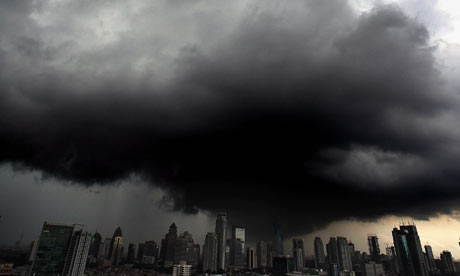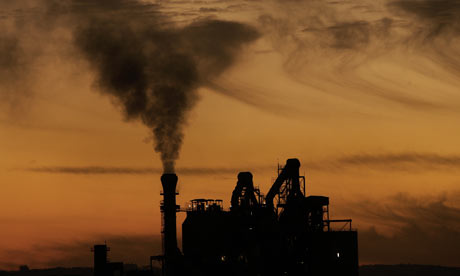February 14, 2009
By P. Sainath
P. Sainath's ZSpace Page
Join ZSpace
The number of farmers who have committed suicide in India between 1997 and 2007 now stands at a staggering 182,936. Close to two-thirds of these suicides have occurred in five states (India has 28 states and seven union territories). The Big 5 - Maharashtra, Karnataka, Andhra Pradesh, Madhya Pradesh and Chattisgarh- account for just about a third of the country's population but two-thirds of farmers' suicides. The rate at which farmers are killing themselves in these states is far higher than suicide rates among non-farmers. Farm suicides have also been rising in some other states of the country.
It is significant that the count of farmers taking their lives is rising even as the numbers of farmers diminishes, that is, on a shrinking farmer base. As many as 8 million people quit farming between the two censuses of 1991 and 2001. The rate of people leaving farming has only risen since then, but we'll only have the updated figure of farmers in the census of 2011.
These suicide data are official and tend to be huge underestimates, but they're bad enough. Suicide data in India are collated by the National Crime Records Bureau (NCRB), a wing of the Ministry of Home Affairs, government of India. The NCRB itself seems to do little harm to the data. But the states where these are gathered leave out thousands from the definition of "farmer" and, thus, massage the numbers downward. For instance, women farmers are not normally accepted as farmers (by custom, land is almost never in their names). They do the bulk of work in agriculture - but are just "farmers' wives." This classification enables governments to exclude countless women farmer suicides. They will be recorded as suicide deaths - but not as "farmers' suicides." Likewise, many other groups, too, have been excluded from that list.
The spate of farm suicides - the largest sustained wave of such deaths recorded in history - accompanies India's embrace of the brave new world of neoliberalism. Many reports on that process and how it has affected agriculture have been featured right here, on the Counterpunch site. The rate of farmers' suicides has worsened particularly after 2001, by which time India was well down the WTO garden path in agriculture. The number of farmers' suicides in the five years - 1997-2001 - was 78,737 (or 15,747 a year on average). The same figure for the five years 2002-06 was 87,567 (or 17,513 a year on average). That is, in the next five years after 2001, one farmer took his or her life every 30 minutes on average. The 2007 figures (detailed below) place that year, too, in the higher trend.
What do the farm suicides have in common? Those who have taken their lives were deep in debt - peasant households in debt doubled in the first decade of the neoliberal "economic reforms," from 26 per cent of farm households to 48.6 per cent. We know that from National Sample Survey data. But in the worst states, the percentage of such households is far higher. For instance, 82 per cent of all farm households in Andhra Pradesh were in debt by 2001-02. Those who killed themselves were overwhelmingly cash crop farmers - growers of cotton, coffee, sugarcane, groundnut, pepper, vanilla. (Suicides are fewer among food crop farmers - that is, growers of rice, wheat, maize, pulses.) The brave new world philosophy mandated countless millions of Third World farmers forced to move from food crop cultivation to cash crop (the mantra of "export-led growth"). For millions of subsistence farmers in India, this meant much higher cultivation costs, far greater loans, much higher debt, and being locked into the volatility of global commodity prices. That's a sector dominated by a handful of multinational corporations. The extent to which the switch to cash crops impacts on the farmer can be seen in this: it used to cost Rs.8,000 ?($165 today) roughly to grow an acre of paddy in Kerala. When many switched to vanilla, the cost per acre was (in 2003-04) almost Rs.150,000 ($3,000) an acre. (The dollar equals about 50 rupees.)
With giant seed companies displacing cheap hybrids and far cheaper and hardier traditional varieties with their own products, a cotton farmer in Monsanto's net would be paying far more for seed than he or she ever dreamed they would. Local varieties and hybrids were squeezed out with enthusiastic state support. In 1991, you could buy a kilogram of local seed for as little as Rs.7 or Rs.9 in today's worst affected region of Vidarbha. By 2003, you would pay Rs.350 -- ($7) -- for a bag with 450 grams of hybrid seed. By 2004, Monsanto's partners in India were marketing a bag of 450 grams of Bt cotton seed for between Rs.1,650 and Rs.1,800 ($33 to $36). This price was brought down dramatically overnight due to strong governmental intervention in Andhra Pradesh, where the government changed after the 2004 elections. The price fell to around Rs.900 ($18) - still many times higher than 1991 or even 2003.
Meanwhile, inequality was the great man-eater among?the "Emerging Tiger" nations of the developing world. The predatory commercialization of the countryside devastated all other aspects of life for peasant farmer and landless workers. Health costs, for instance, skyrocketed. Many thousands of youngsters dropped out of both school and college to work on their parents' farms (including many on scholarships). The average monthly per capita expenditure of the Indian farm household was just Rs.503 (ten dollars) by early this decade. Of that, 60 per cent roughly was spent on food and another 18 per cent on fuel, clothing and footwear.
Farmers, spending so much on food? To begin with, millions of small and marginal Indian farmers are net purchasers of food grain. They cannot produce enough to feed their families and have to work on the fields of others and elsewhere to meet the gap. Having to buy some of the grain they need on the market, they are profoundly affected by hikes in food prices, as has happened since 1991, and particularly sharply earlier this year. Hunger among those who produce food is a very real thing. Add to this the fact that the "per capita net availability" of food grain has fallen dramatically among Indians since the "reforms" began: from 510 grams per Indian in 1991, to 422 grams by 2005. (That's not a drop of 88 grams. It's a fall of 88 multiplied by 365 and then by one billion Indians.) As prof. Utsa Patnaik, India's top economist on agriculture, has been constantly pointing out, the average poor family has about 100 kg less today than it did just ten years ago - while the elite eat like it's going out of style. For many, the shift from food crop to cash crop makes it worse. At the end of the day, you can still eat your paddy. It's tough, digesting cotton. Meanwhile, even the food crop sector is coming steadily under corporate price-rigging control. Speculation in the futures markets pushed up grain prices across the globe earlier this year.
Meanwhile, the neoliberal model that pushed growth through one kind of consumption also meant re-directing huge amounts of money away from rural credit to fuel the lifestyles of the aspiring elites of the cities (and countryside, too). Thousands of rural bank branches shut down during the 15 years from 1993-2007.
Even as incomes of the farmers crashed, so did the price they got for their cash crops, thanks to obscene subsidies to corporate and rich farmers in the West, from the U.S. and EU. Their battle over cotton subsidies alone (worth billions of dollars) destroyed cotton farmers not merely in India but in African nations such as Burkina Faso, Benin, Mali, and Chad. Meanwhile, all along, India kept reducing investment in agriculture (standard neoliberal procedure). Life was being made more and more impossible for small farmers.
As costs rose, credit dried up. Debt went out of control. Subsidies destroyed their prices. Starving agriculture of investment (worth billions of dollars each year) smashed the countryside. India even cut most of the few, pathetic life supports she had for her farmers. The mess was complete. From the late-'90s, the suicides began to occur at what then seemed a brisk rate.
In fact, India's agrarian crisis can be summed up in five words (call it Ag Crisis 101): the drive toward corporate farming. The route (in five words): predatory commercialization of the countryside. The result: The biggest displacement in our history.
Corporations do not as yet have direct control of Indian farming land and do not carry out day-to-day operations directly. But they have sewn up every other sector, inputs, outlets, marketing, prices, and are heading for control of water as well (which states in India are busy privatizing in one guise or another).
The largest number of farm suicides is in the state of Maharashtra, home to the Mumbai Stock Exchange and with its capital Mumbai being home to 21 of India's 51 dollar billionaires and over a fourth of the country's 100,000 dollar millionaires. Mumbai shot to global attention when terrorists massacred 180 people in the city in a grisly strike in November. In the state of which Mumbai is capital, there have been 40,666 farmers' suicides since 1995, with very little media attention.
Farmers' suicides in Maharashtra crossed the 4,000-mark again in 2007, for the third time in four years, according to the National Crime Records Bureau. As many as 4,238 farmers took their lives in the state that year, the latest for which data are available,?accounting?for a fourth of all the 16,632 farmers' suicides in the country. That national total represents a slight fall from the 17,060 farm suicides of 2006. But the broad trends of the past decade seem unshaken. Farm suicides in the country since 1997 now total 182,936.
To repeat, the five worst affected states?- Maharashtra, Andhra Pradesh, Karnataka, Madhya Pradesh and Chattisgarh?- account for two-thirds of all farmers' suicides in India. Together, they saw 11,026 in 2007. Of these, Maharashtra alone accounted for?over 38 per cent. Of the Big 5, Andhra Pradesh saw a decline of 810 suicides against its 2006 total. Karnataka saw a rise of 415 over the same period. Madhya Pradesh (1,375) posted a decline of 112. But Chattisgarh's 1,593 farm suicides mean an increase of 110 over 2006. Specific factors in these states nourish the problem. These are zones of highly diversified, commercialized agriculture where cash crops dominate. Water stress has been a common feature, and gets worse with the use of technologies such as Bt seed that demand huge amounts of water. High external inputs and input costs are also common, as also the use of chemicals and pesticides. Mindless deregulation dug a lot of graves, lit a lot of pyres.
Maharashtra registered a fall of 215 farm suicides in 2007. However, no other state even touches the 3,000 mark. And AP (with 1,797) and Karnataka (2,135) - the next two worst hit states - together do not cross Maharashtra's 4,000-plus mark. A one-year dip of 221 occurred in 2005 too, in Maharashtra, only to be followed by an all-time high of 4,453 suicides in 2006. The state's trend shows no turnaround and remains dismal.
Maharashtra's 2007 figure of 4,238 follows one and a half years of farm "relief packages" worth around Rs.5,000 crore ($1 billion) and a prime ministerial visit in mid-2006 to the distressed Vidharbha region. The state has also seen a plethora of official reports, studies and commissions of inquiry over 2005-07, aimed at tackling the problem. However, the 12,617 farm suicides in the same years is its worst ever total for any three-year period since the state began recording such data in 1995. Indeed, farm suicides in Maharashtra since that year have crossed the 40,000 mark. The structural causes of that crisis seem untouched.
Nationally, farmers' suicides between 2002-07 were worse than for the years 1997-2001. NCRB data for the whole country now exists from 1997-2007. In the five years till 2001, there were 15,747 farmers' suicides a year on average. For the six years from 2002, that average is 17,366 farmers' suicides each year. The increase is distressingly higher in the main crisis states.
P. Sainath is the rural affairs editor of The Hindu and is the author of Everybody Loves a Good Drought. A regular contributor to CounterPunch, he can be reached at psainath@vsnl.com.



Glen is completely wrong. The standard of living would rise marginally in the UK and dramatically in Asia. And wages do not tend to a global average, they rise overall because money and resources including labour are not being wasted but are being allocated efficiently.
As has been happening.
Alan Wilkinson, Russell, New Zealand
That's fine as long as you accept that wages and standards of living will initially at least tend to some sort of global average. The standard of living in the UK would drop dramatically and that in Asia would rise marginally. I for one am not so altruistic.
Glen, Melbourne,
I suspect the main idea of loudly promoting free trade is to try to persuade other markets to stay open and non-protectionist rather than a serious declaration of personal intent. The reasoning would thus appear to be political rather than economic.